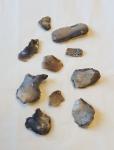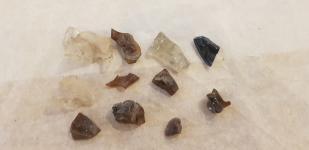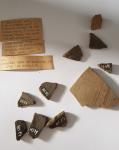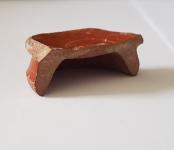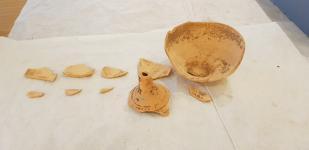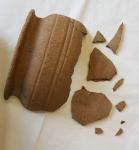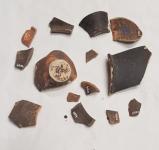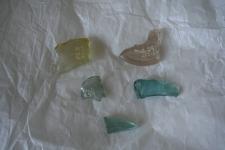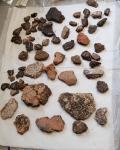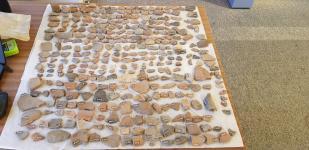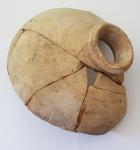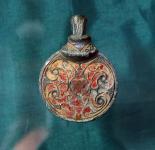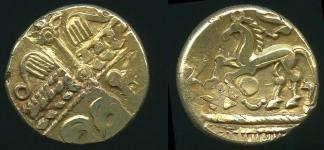Archaeology
Littlehampton Museum is the repository for professional archaeological digs for a wide area surrounding Littlehampton including Angmering, Barnham, Climping, Eastergate, Felpham, Ford, Littlehampton, Lyminster, Crossbush, Middleton-on-sea, Poling, Walberton and Yapton. This wide array of finds covers the history of the area from prehistory to the present day, with the largest proportion of the collection relating to Roman or Iron Age material. The vast majority of our collection remains uncatalogued and is a big part of our current documentation project.
New Addition to Collection
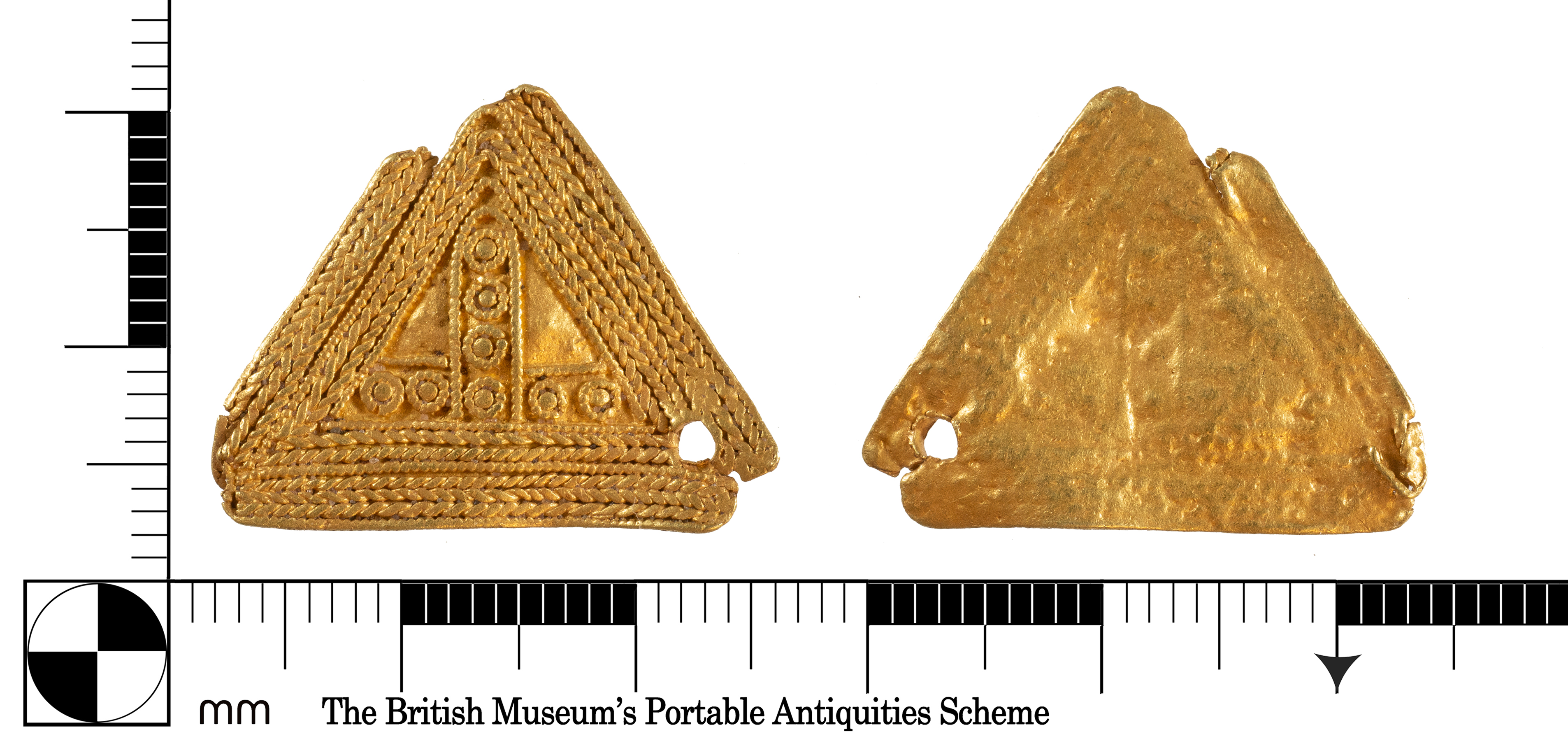
Littlehampton Museum is thrilled to announce the latest addition to their collection: a breathtaking early medieval (Anglo-Saxon) gold “plate”, dated to c. 570–630 AD. Found near Climping, by a metal detectorist, this tiny masterpiece features an intricate twisted gold wire filigree design, similar to the remarkable pieces from the Staffordshire Hoard. It is possible that it was used to adorn a sword hilt, although it might have decorated other precious items too, this small but mighty artifact showcases the incredible skill of early craftspeople, working without modern lighting or magnification.
A heartfelt thanks to the finder and landowner for generously making this donation through the Portable Antiquities Scheme.
The plate is now on display in the Museum’s “Treasures from the Ground” case in the Archaeology Gallery. Entry to the Museum is free.
“As custodians of our local heritage, we’re delighted to welcome this extraordinary artifact into the museum’s collection. This Anglo-Saxon gold plate is a striking reminder of the ingenuity and artistry that thrived in early medieval England,” said Councillor Freddie Tandy, Chair of Littlehampton Town Council’s Community Resources Committee. “The generosity of both the finder and the landowner in sharing this piece through the Portable Antiquities Scheme allows all of us to celebrate and learn from our shared past. Make sure you visit the museum to celebrate this exceptional piece and the remarkable history it represents.”
